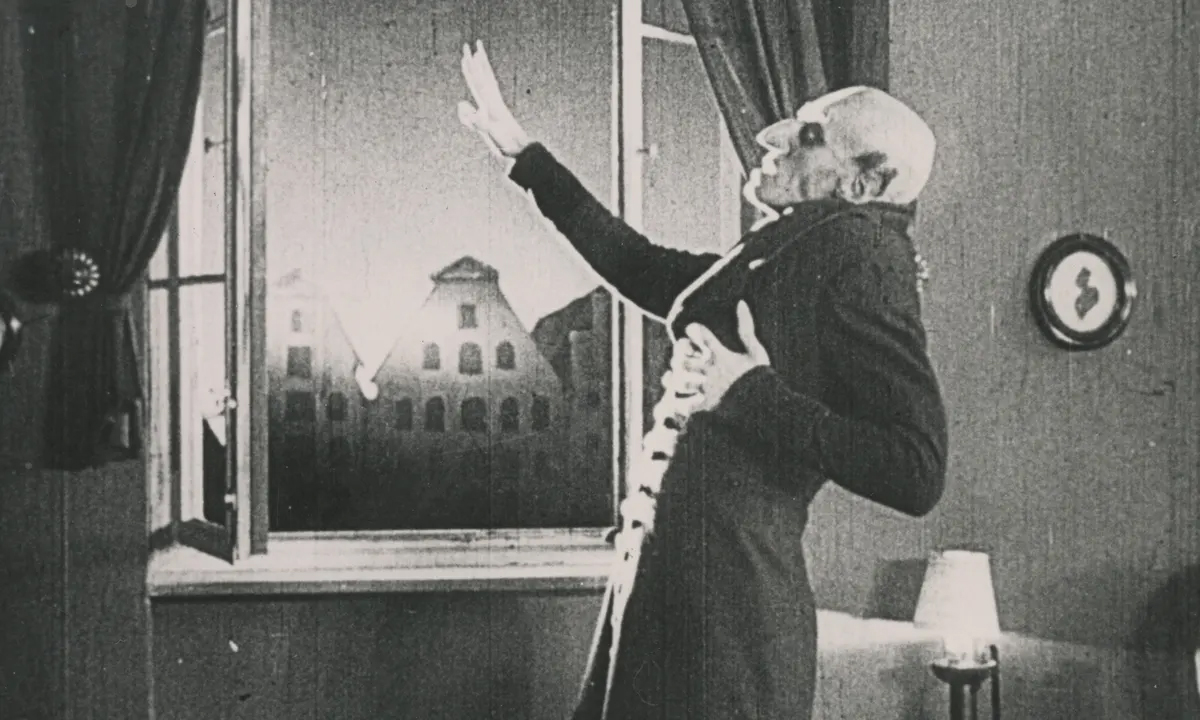Overview
This project seeks to create new audiovisual works centered around F. W. Murnau’s 1922 silent film Nosferatu: A Symphony of Horror. By embracing the aesthetics of German Expressionism of early cinema, this initiative aims to unfold a collaborative effort between the Music Department and the Department of Theater, Film & Digital Production during Spring 2024. Students from MUS 249 Audiovisual Composition and TFDP 157 Introduction to Film Editing will join forces, alongside international artists, to produce new works inspired by Murnau’s masterpiece or other visuals that capture its essence. These works are set to be showcased at the Culver Center in Riverside, California, on June 8, 2024, complemented by a symposium for artists to discuss their creative processes.
Project Description
1. Absent Presences
Rooted in Saviour Catania’s analysis (Catania 2004), the project will explore the theme of “absent presences” as portrayed in Nosferatu and its connection to Bram Stoker’s Dracula. This exploration will encompass the spectral portrayal of Count Orlok and the ethereal depiction of “liminal landscapes,” blurring the boundaries between the known and unknown. Catania’s insights into the deep connections between the film and the novel, through the lens of German Romanticism, will serve as a foundational conceptual framework for the project.
2. Digital Cultures
The project will extend its thematic reach into the exploration of contemporary digital cultures. This exploration will examine how the concept of “absent presence” manifests in digital and virtual environments. Through the juxtaposition of Nosferatu‘s early 20th-century themes with 21st-century digital realities, the project aims to shed light on the continuity and evolution of these concepts within digital cultures. Students and artists will be encouraged to reflect on the digital as a liminal space where identity, presence, and absence interplay, and to consider how this digital liminality reshapes our understanding of self and other in the context of modern media.
3. Suggested Approaches
We propose the following approaches for participants:
- Engage with Liminal Spaces: Create compositions that delve into the concept of liminal spaces within audiovisual media, drawing inspiration from Nosferatu or crafting new visuals that resonate with this theme, exploring the thresholds between known and unknown realms.
- Incorporate Gothic Motifs: Utilize Gothic motifs from Nosferatu and Dracula to enrich compositions, focusing on elements that emphasize the spectral, the uncanny, and the ethereal. This approach ties the projects directly to their literary and cinematic inspirations, offering a rich palette of visual and thematic material.
- Explore Sound and Silence Dynamics: Experiment with the interplay between sound and silence to reflect the concept of absent presence. This mirrors the spectral nature of Nosferatu, where the presence is often felt rather than seen, and silence can be as powerful as sound.
- Create Audiovisual Polyphony: Dive into the intricate relationships between sound and image to forge a multilayered audiovisual composition. This approach aims to generate multiple meanings and interpretations, showcasing the complexity of narrative and thematic development possible within audiovisual media.
- Employ Digital Fragmentation: Adopt digital fragmentation and layering techniques both sonically and visually to represent the fragmentation of identity and presence in digital spaces. Inspired by the ethereal and fragmented nature of Count Orlok, this approach allows for the exploration of digital identity and presence’s fluidity and multiplicity.
- Narrative vs. Non-Narrative Forms: Navigate the continuum between narrative and non-narrative forms. Participants are encouraged to either convey a story directly or evoke themes and moods through abstract imagery and sound, offering a broad spectrum of expressive possibilities.
By leveraging these approaches, participants will have the opportunity to explore the complexities of absent presence across both historical and contemporary landscapes, fostering a deep engagement with the themes at the heart of Nosferatu and digital cultures.
